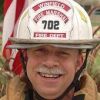Many of us watched in horror this past March as Fresno City (Calif.) Fire Capt. Pete Dern fell through the roof of a burning house and sustained life-threatening second- and third-degree burns. And were are happy to hear of his remarkable recovery process.
However, you don’t have to look very far on the Internet to find situations where firefighters find themselves in rapidly deteriorating fire situations. We’ll not focus on why vertical ventilation is important or how it should be accomplished, but rather on developing your ability to read red-flag warning indicators.
You must be aware of key risk indicators in order to make better fireground decisions prior to placing firefighters on a potentially fire-weakened roof. Just as reading, writing and arithmetic were the foundations of education, a great foundation for risk management is the 3 Rs of size-up: reading the risk, reading the structure and reading the smoke.
Read the risk
A key risk factor to consider prior to allowing crews to operate on the roof is whether or not the fire has weakened the structural supports. Significant or heavy fire involvement of the structure’s roof or floor support system is a red-flag warning sign for crews.
Limited fire spread in the attic or floor void space does not necessarily create a no go situation for firefighters. It does indicate a potentially dangerous fire situation that can rapidly develop and endanger the lives of firefighters. Knowing the location and extent of fire spread into a void space and communicating this is a key safety factor.
Prevailing winds of 10 mph or greater entering the structure through roof openings, failed windows, doors or soffits can produce wind-driven fire conditions that can immediately trap unsuspecting firefighters with little or no warning.
Reading the risk should include overhaul operations. Firefighters have needlessly died or suffered career-ending injuries after falling through the roofs of totaled-out structures, simply because of a lack of situational awareness or the failure to follow SOPs for roof ladder or aerial platform use.
Firefighters have no problem risking their lives when another person’s life is at stake. But we should risk less when there is little or nothing left to save. This is not to be confused with doing nothing. It’s about risk vs. reward.
Read the structure
Every firefighter should know the dangers posed by legacy vs. modern wood-frame structural support systems and the latter’s notoriously fast failure time when roofs and floors are exposed to fire conditions. This style of wood frame construction is a red flag.
Other factors to consider include the age and physical condition of the structure. Look for add-ons and renovations over the years that create a maze with numerous voids. Consider the dead and live load factors on the fire-weakened roof.
Look for the structural features that can help or hinder your operation and for the contents or process hazards involved within the structure. This is where pre-incident planning is an invaluable tool.
Read the smoke
To understand and appreciate the risk posed by smoke and it’s toxic brew of fire gases, we must first understand that fuel loads in today’s structures have changed significantly over the years.
Fuel loads have evolved from natural-based to synthetic-based fuels. Synthetic fuels create fire gases, which are much more combustible and carcinogenic than what’s produced by natural fuels.
If you have been fortunate enough to attend one of Chief Dave Dodson’s “The Art of Reading Smoke” classes, you will recall that smoke is fuel. A heavy volume of fast moving, dark smoke, pushing from the attic or around roof-mounted equipment indicates the roof support system is involved and is likely compromised.
This is a red flag for the incident commander. These conditions can go from dangerous to deadly within seconds.
Remember, size-up is a continuous process until the incident is terminated. The skill of reading the 3 Rs is only sharpened through use. It should be a part of every fire officer’s skill set.













